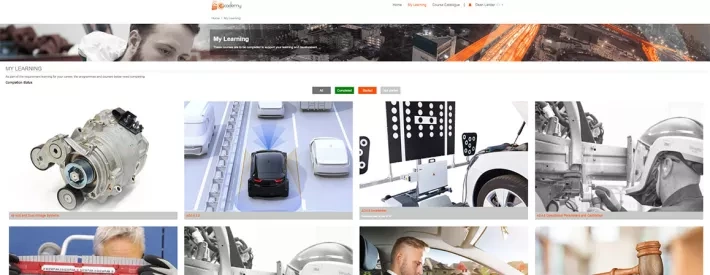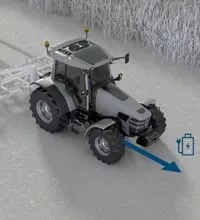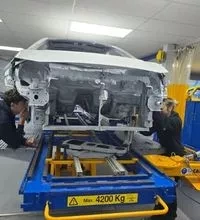Shaking up the classroom

MotorPro discovers how Thatcham Research’s Automotive Academy is taking the repair sector’s vocational training digital
When COVID-19 first hit, the team at Thatcham Research’s Automotive Academy faced a stark choice: move online for the duration of lockdown or suspend all training. Even for an institution with a track record in digital learning, it represented a huge challenge. But Thatcham’s online classrooms have proved a success – and they could have implications far beyond the current crisis.
“We started working on a blended learning strategy back in 2014 by setting up a series of e-learning modules,” says Dean Lander, Thatcham’s Head of Repair Sector Services. “When lockdown came, we had to accelerate this programme out of necessity, but it’s not just a short-term response. We can see a clear demand for
it in the future.”
The emphasis here is on combining different training methods, with interactive online classrooms being used alongside established e-learning techniques and practical sessions for both apprentices and those undertaking continuing professional development. “The new online tools that we’re using are definitely allowing us to do more remotely, but hands-on experience will always remain a critical part of technical training,” says Lander. “You’ll never be able to replace the experience of an apprentice picking up a paint gun and spraying. Sure, they can do that in the workplace, but it’s not the same as doing it with a trained instructor in a learning environment.”
Learning the ropes
This shift towards online learning is being made possible by a new approach, Lander explains. The first lockdown sessions were essentially group calls on an online chat service, but since then Thatcham has been working hard to provide a more immersive, interactive experience. This includes breakout groups, Q&A sessions and quizzes.
“One of the challenges is ensuring you get engagement with the learners. We want to provide a proper classroom activity rather than simply a webinar. Different people learn in different ways, and you need that interaction with the learners to ensure they’re all engaged,” says Lander.
The online classroom sessions are based around a live interactive broadcast that learners can watch on just about any web-enabled device. All an employer needs to provide is some basic IT facilities and a quiet area such as a meeting room.
Thatcham has put a lot of work into streamlining the online teaching process and developing a format that works well on camera. “We’ve had to change the way we carry out demonstrations,” says Lander. “A good example is the supplemental restraint system in a car seat. Traditionally, teaching learners about this would involve a single instructor taking the seat apart to uncover the airbag and stopping periodically to explain what they’re doing. Now, one instructor dismantles the seat while a second runs the online classroom, providing a continuous voiceover, which condenses the total process down from two hours to 45 minutes. This remains a live, interactive session, but it’s also recorded for learners to refer back to.”
Accelerating the process
The aim of all this is to prepare learners so they’re ready to hit the ground running when they visit the Academy for practical training. Thatcham estimates that this reduces their total time on-site by as much as 60%, while still maintaining the same amount of hands-on activity.
“Through this approach, the employer gets a more productive person far quicker,” says Lander. “It cuts down on time away from the workplace and reduces expenditure on travel and accommodation. Meanwhile, we work out an action plan for each apprentice with their employer and their mentor, which assigns them tasks that they should be competent to do.”
He admits that 2020 has been quite a steep learning curve for the instructors themselves at times, with new ideas coming up on a daily basis as the team fleshed out the new online format. The cloud-based teaching platform has also evolved rapidly over this period, but it could be just the start for this technology.
“One option that we’re exploring is the use of head-mounted cameras that will enable the learner to see exactly what the instructor sees. We’re also looking into ways to enable the delegate to reach into that digital environment. For instance, allowing them to click on the screen and drop a virtual pin on a particular part so they can ask about it. Another example might be giving them the option to freeze-frame the live feed and then send it back to the instructor with an annotation drawn on to support a question.”
For apprentices and technicians brought up in the digital age, this could all soon become second nature. It’s unlikely that anything will ever replace practical sessions in the workshop, but when it comes to classroom exercises, the future may well be digital.




